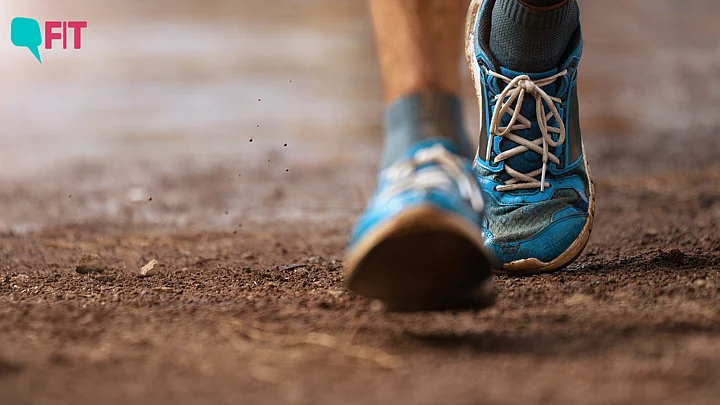In India, 57 percent women have insufficient levels of physical activity, and 42 percent men are physically unfit, according to a study published in the medical journal, The Lancet Global Health, on Tuesday, 25 June.
Commenting on the study's findings, renowned endocrinologist Dr Anoop Misra tells FIT, "This study shows the escalation of the physical inactivity epidemic (in India)."
The big findings:
When it comes to physically unfit countries, India had the 12th highest prevalence among 195 countries.
The most physically unfit regions globally were Asia-Pacific and South Asia, with 48 percent and 45 percent physically unfit populations respectively.
Globally, 31.3 percent of the adult population is physically unfit. In 2010, this number was at 26.4 percent. Meanwhile, the global target is to reach a position where less than 15 percent of the world population is physically unfit.
Why it matters: In 2000, 22.3 percent of the Indian adult population was physically unfit. In 2010, the number was up to 34 percent adults. And in 2022, 49.4 percent of the adult population in the country were not meeting the weekly threshold for sufficient physical activity as per World Health Organization’s (WHO) guidelines.
If the course is not corrected, it would mean that by the end of this decade, 60 percent of Indian adults will be physically unfit, the study warned.
Between the lines: The disparity in the level of physical activity between men and women, however, doesn't just exist in India.
In South Asia, across countries, women have, on average, 14 percent higher insufficient physical activity levels than men. The region ranks the second highest when it comes to adults being “insufficiently physically active.”
Zooming in on India: According to the WHO, a physically fit adult should engage in at least 150-300 minutes of activity weekly. Those who don’t are at a greater risk of non-communicable diseases like diabetes, obesity, heart conditions, etc.
"Previous studies have summarised Indians to be more physically inactive than their Caucasian counterparts, and this trend continues. People need to understand that the benefits of aerobic physical activity are multifarious, from diabetes, to cancers, and mental well being," says Dr Misra.
In June 2023, FIT had reported on a study conducted by the Madras Diabetes Research Centre, and funded by the Indian Council of Medical Research, that had stated that at least 11.4 percent of the Indian population has diabetes. Additionally, 15.3 percent of the study’s participants were found to be prediabetic.
The research study had also sparked concern about obesity – stating that 28.6 percent of the country’s population had generalised obesity, while 39.5 percent had abdominal obesity.
At the time, FIT had quoted the study’s authors as saying that how the health community decides to deal with diabetes in the next 20 years could potentially determine the health and life expectancy of these populations for the next 80 years.
But wait, there’s more bad news.
Earlier this year, another Lancet study had said that at least 44 million women and 26 million men in India, above the age of 20 years, are clinically obese.
Globally, the WHO says that obesity is responsible for:
44 percent cases of diabetes
23 percent cases of ischemic heart disease
7-41 percent of cancer cases
Speaking to FIT, Dr HPS Sachdev, Paediatric Consultant at the Sitaram Bhartia Institute of Science & Research, and one of the authors of the landmark Lancet study on obesity, had said,
"Obesity is rising dramatically. In India, the obesity statistics are substantially underestimated. Obesity is associated dramatically with the risk of non-communicable diseases like diabetes, hypertension, hyperlipidemia, so it has health consequences and needs to be dealt with."
Indians, It’s Time to Move It
According to experts, changes in diet and lifestyle can be the "key" to solving this crisis.
Dr Misra, along with a group of other senior doctors and researchers, released a comprehensive set of guidelines earlier this year called Consensus Physical Activity Guidelines for Asian Indians that simplifies it.
Summarising the key points of the guidelines, Dr Misra says that "at least 45 minutes of aerobic physical activity (walk, play, cycle, NOT yoga) plus some strength training and work-related activity to make it 60 minutes daily (300 minutes per week) in view of heightened occurrence of diabetes and metabolic diseases" is necessary for physical fitness.
If you have a packed schedule and no time to squeeze in an elaborate work or workout routine in your day, he says, just brisk-walking for 10-15 minutes per day is a good place to start.
Walk for 10-15 minutes of before every meal (a pre-lunch walk in the office, for instance)
Increase the duration of pre and post-meal walks during the weekends
Dr Misra goes on to add, "stopping physical activity even for 48 hours will take away some benefits of the previous activity."
"It is like daily wages, you work out daily for your wages of benefits. I recommend that all workplaces should have a small gym, at least a stationary bicycle with some weights."Dr Anoop Misra
(At The Quint, we question everything. Play an active role in shaping our journalism by becoming a member today.)
